What is “Ryzen”?
“Ryzen” (code-name ZP aka “Zeppelin”) is the latest generation CPU from AMD (2017) replacing the previous “Vishera”/”Bulldozer” designs for desktop and server platforms. An APU version with an integrated (GP)GPU will be launched later (Ryzen2) and likely include a few improvements as well.
This is the “make or break” CPU for AMD and thus greatly improve performance, including much higher IPC (instructions per clock), higher sustained clocks, better Turbo performance and “proper” SMT (simultaneous multi-threading). Thus there are no longer “core modules” but proper “cores with 2 SMT threads” so an “eight-core CPU” really sports 8C/16T and not 4M/8T.
No new chipsets have been introduced – thus Ryzen should work with current 300-series chipsets (e.g. X370, B350, A320) with a BIOS/firmware update – making it a great upgrade.
In this article we test CPU Cache and Memory performance; please see our other articles on:
Hardware Specifications
We are comparing the 2nd-from-the-top Ryzen (1700X) with previous generation competing architectures (i7 Skylake 4C and i7 Haswell-E 6C) with a view to upgrading to a mid-range high performance design. Another article compares the top-of-the-range Ryzen (1800X) with the latest generation competing architectures (i7 Kabylake 4C and i7 Broadwell-E 8C) with a view to upgrading to the top-of-the-range design.
| CPU Specifications | AMD Ryzen 1700X |
Intel 6700K (Skylake) |
Intel 5820K (Haswell-E) | Comments | |
| TLB 4kB pages |
64 full-way
1536 8-way |
64 8-way
1536 6-way |
64 4-way
1024 8-way |
Ryzen has comparatively ‘better’ TLBs than even SKL while the 2-generation older HSW-E is showing its age. | |
| TLB 2MB pages |
64 full-way
1536 2-way |
8 full-way
1536 6-way |
8 full-way
1024 8-way |
Nothing much changes for 2MB pages with Ryzen leading the pack again. | |
| Memory Controller Speed (MHz) | 600-1200 | 800-4000 | 1200-4000 | Ryzen’s memory controller runs at memory clock (MCLK) base rate thus depends on memory installed. Intel’s UNC (uncore) runs between min and max CPU clock thus perhaps faster. | |
| Memory Speed (Mhz) Max |
2400 / 2666 | 2533 / 2400 | 2133 / 2133 | Ryzen supports up to 2666MHz memory but is happier running at 2400; SKL supports only up to 2400 officially but happily runs at 2533MHz; old HSW-E can only do 2133MHz but with 4 memory channels. | |
| Memory Channels / Width |
2 / 128-bit | 2 / 128-bit | 4 / 256-bit | HSW-E leads with 4 memory channels of DDR4 providing massive bandwidth for its cores; however both Ryzen and Skylake can use faster DDR4 memory reducing this problem somewhat. | |
| Memory Timing (clocks) |
14-16-16-32 7-54-18-9 2T | 16-18-18-36 5-54-21-10 2T | 14-15-15-36 4-51-16-3 2T | Despite faster memory Ryzen can run lower timings than HSW-E and SKL reducing its overall latencies. | |
Core Topology and Testing
As discussed in the previous article, cores on Ryzen are grouped in blocks (CCX or compute units) each with its own 8MB L3 cache – but connected via a 256-bit bus running at memory controller clock. This is better than older designs like Intel Core 2 Quad or Pentium D which were effectively 2 CPU dies on the same socket – but not as good as a unified design where all cores are part of the same unit.
Running algorithms that require data to be shared between threads – e.g. producer/consumer – scheduling those threads on the same CCX would ensure lower latencies and higher bandwidth which we will test with presently.
We have thus modified Sandra’s ‘CPU Multi-Core Efficiency Benchmark‘ to report the latencies of each producer/consumer unit combination (e.g. same core, same CCX, different CCX) as well as providing different matching algorithms when selecting the producer/consumer units: best match (lowest latency), worst match (highest latency) thus allowing us to test inter-CCX bandwidth also. We hope users and reviewers alike will find the new features useful!
Native Performance
We are testing native arithmetic, SIMD and cryptography performance using the highest performing instruction sets (AVX2, AVX, etc.). Ryzen supports all modern instruction sets including AVX2, FMA3 and even more.
Results Interpretation: Higher values (GOPS, MB/s, etc.) mean better performance.
Environment: Windows 10 x64, latest AMD and Intel drivers. Turbo / Dynamic Overclocking was enabled on both configurations.
Ryzen’s core, memory and cache bandwidths are great, in many cases much higher than its Intel rivals partly due to more cores and more caches (8 vs 6 or 4); overall latencies are also fine for caches and memory – except the crucial ‘in-page random access’ data latencies which are far higher – about 3 times – TLB issues? We’ve been here before with Bulldozer which could not be easily fixed – but if AMD does manage it this time Ryzen’s performance will literally fly!
Still, despite this issue we’ve seen in the previous article that Ryzen’s CPU performance is very strong thus it may not be such a big problem.
SiSoftware Official Ranker Scores
Final Thoughts / Conclusions
Ryzen’s memory performance is not the clean-sweep we’ve seen in CPU testing but it is competitive with Intel’s designs, especially the older HSW (and thus BRW) cores while the newer SKL (and thus KBL) cores sporting improved caches and TLBs which are hard for Ryzen to beat. Still it’s nothing to be worried about and perhaps AMD will be able improve things further with microcode/firmware updates if not new steppings and models (e.g. the APU model 10).
Overall we’d still recommend Ryzen over Intel CPUs unless you want absolutely tried and tested design which have already been patched by microcode and firmware/BIOS updates. The platform has a bright future with more CPUs destined to use the AM4 socket while both 1551 (SKL/KBL) and 2011 (HSW-E/BRW-E) platforms due to be replaced again with no future upgrades.

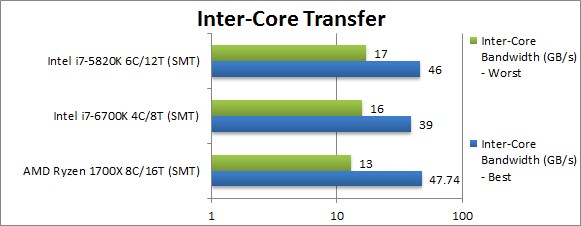

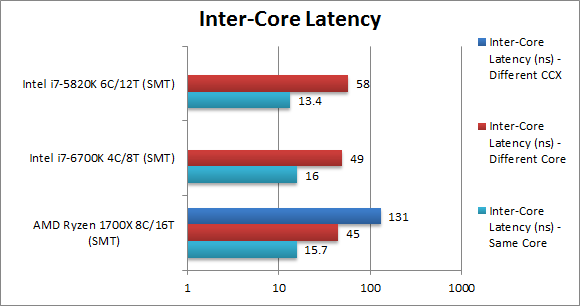
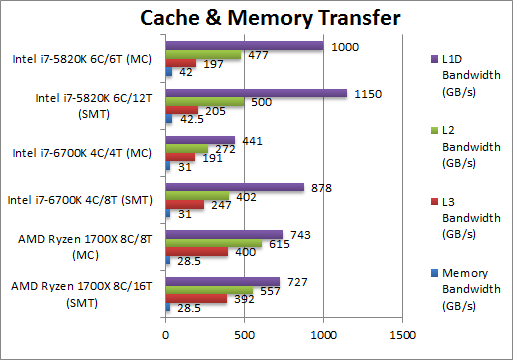

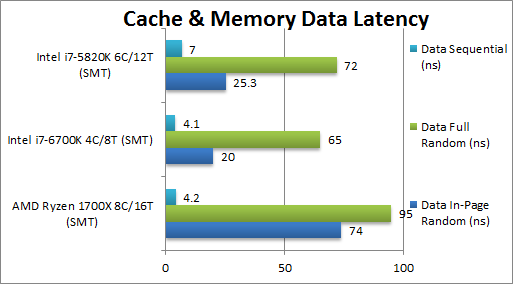

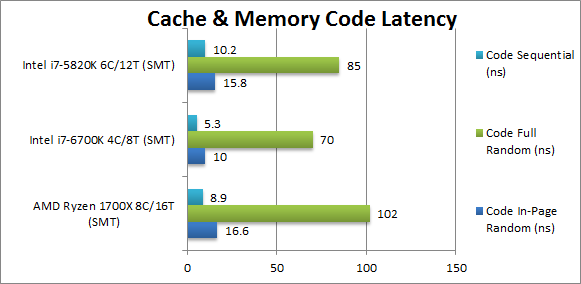
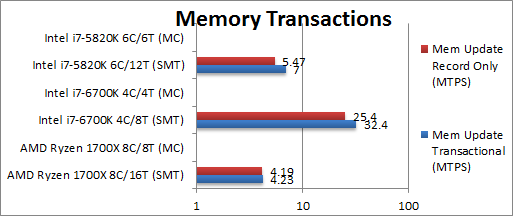

Pingback: AMD Ryzen Review and Benchmarks – CPU – SiSoftware